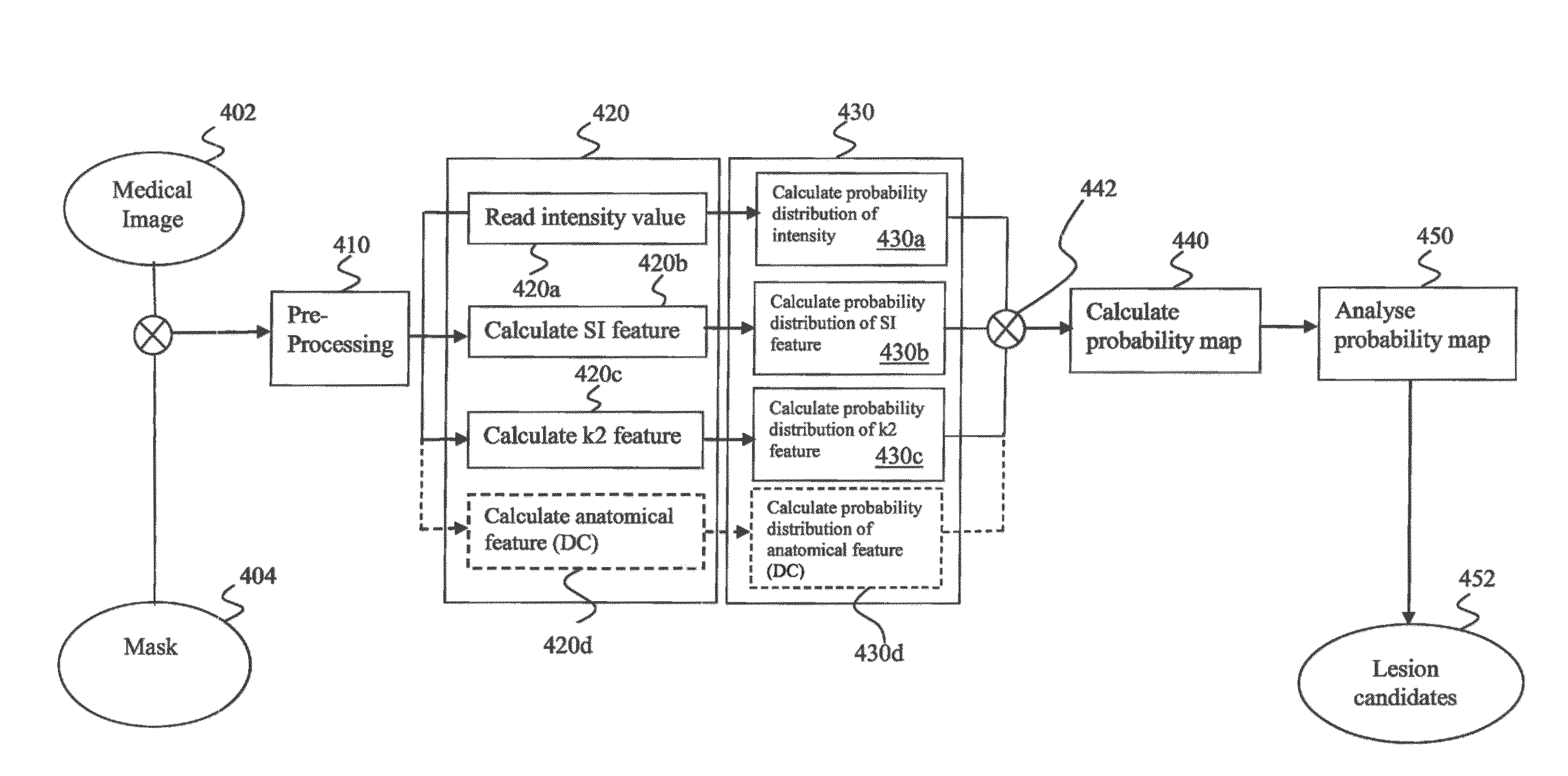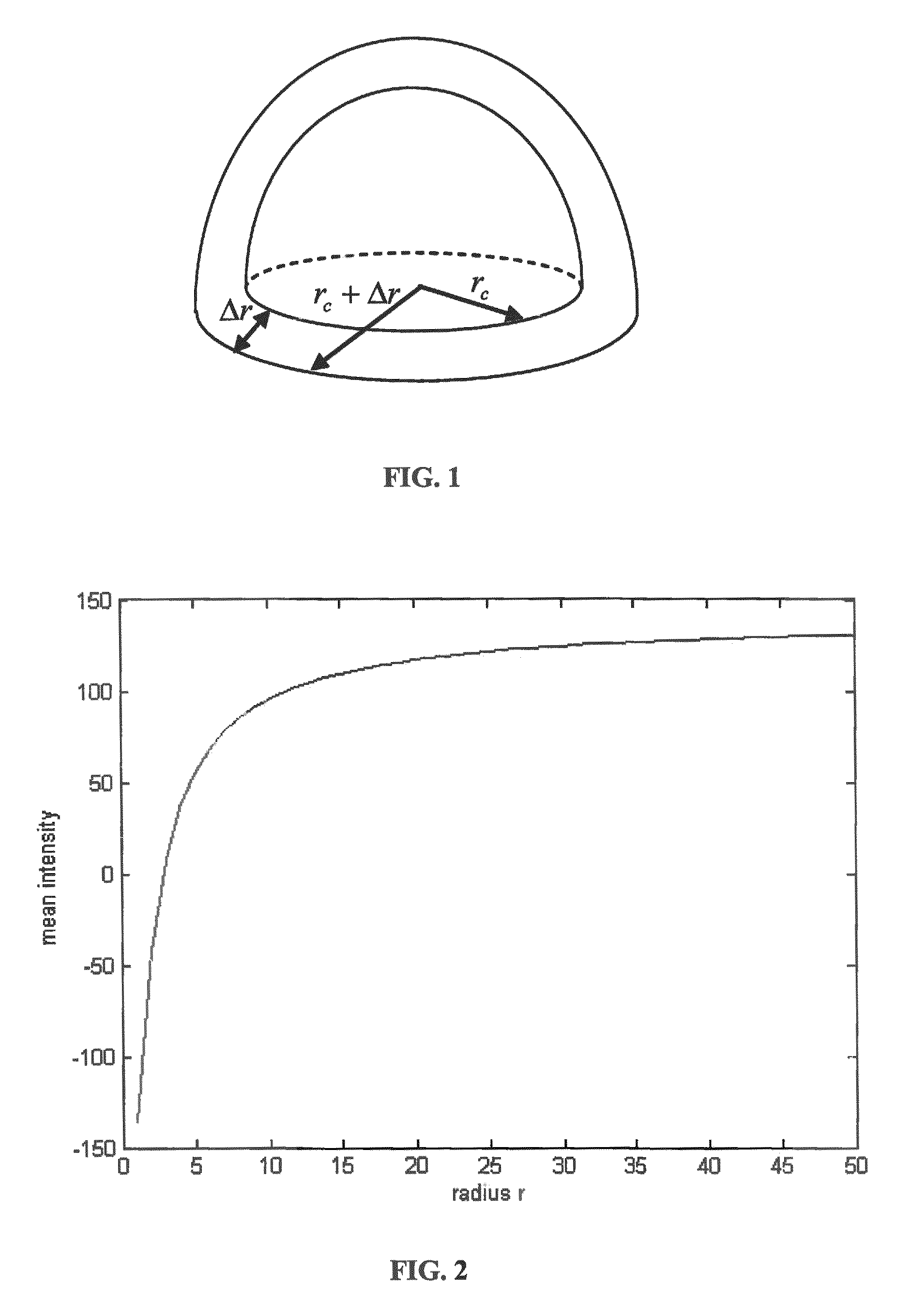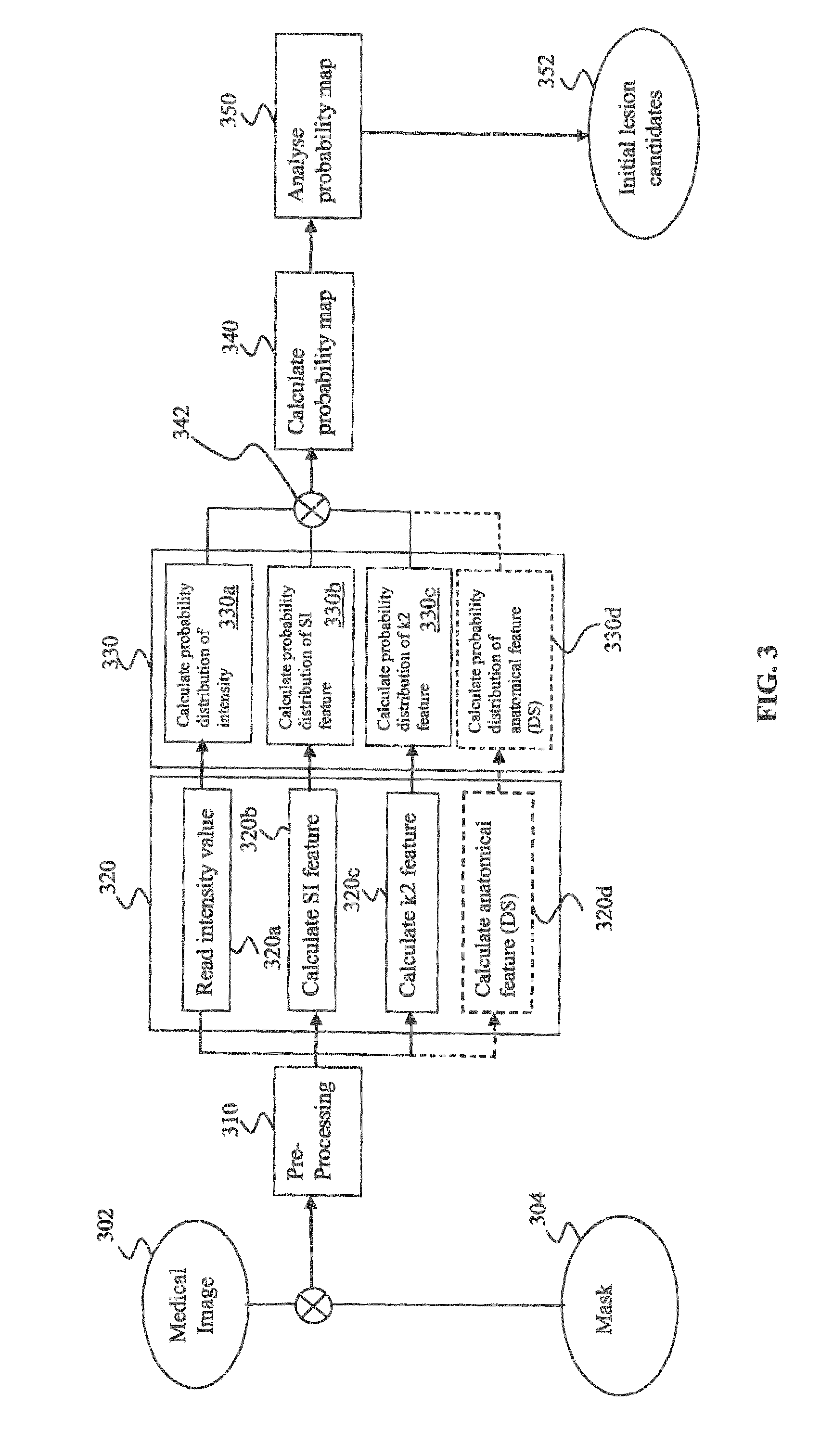Medical image processing
a technology of image processing and medical imaging, applied in the field of medical imaging and analysis, can solve the problems of large uncertainty inherent in detection problems, limited ability to model the complexity of actual polyps found in human anatomy, etc., and achieve the effects of low cost, low uncertainty, and easy encoded
- Summary
- Abstract
- Description
- Claims
- Application Information
AI Technical Summary
Benefits of technology
Problems solved by technology
Method used
Image
Examples
Embodiment Construction
[0041]The invention will now be described, purely by way of example, in the context of a method of identifying polyps in the colon. However, it is to be understood that the invention is not limited solely to the identification of colonic polyps. The invention can also be used to identify other anatomical features such as lung nodules, liver lesions, mammographic masses, brain lesions, any other suitable type of abnormal tissue or suitable types of healthy tissue.
[0042]The invention is directed to processing three-dimensional medical image data using a Bayesian framework. The term “Bayesian framework” as used herein refers to the use of Bayes' law to combine statistical information relating to a plurality of features that characterise properties of a medical image, in order to determine the probability that a particular voxel in the medical image represents a particular object. The three-dimensional medical image data can be generated by a computed tomography (CT) scan, or from a mag...
PUM
 Login to View More
Login to View More Abstract
Description
Claims
Application Information
 Login to View More
Login to View More - R&D
- Intellectual Property
- Life Sciences
- Materials
- Tech Scout
- Unparalleled Data Quality
- Higher Quality Content
- 60% Fewer Hallucinations
Browse by: Latest US Patents, China's latest patents, Technical Efficacy Thesaurus, Application Domain, Technology Topic, Popular Technical Reports.
© 2025 PatSnap. All rights reserved.Legal|Privacy policy|Modern Slavery Act Transparency Statement|Sitemap|About US| Contact US: help@patsnap.com



